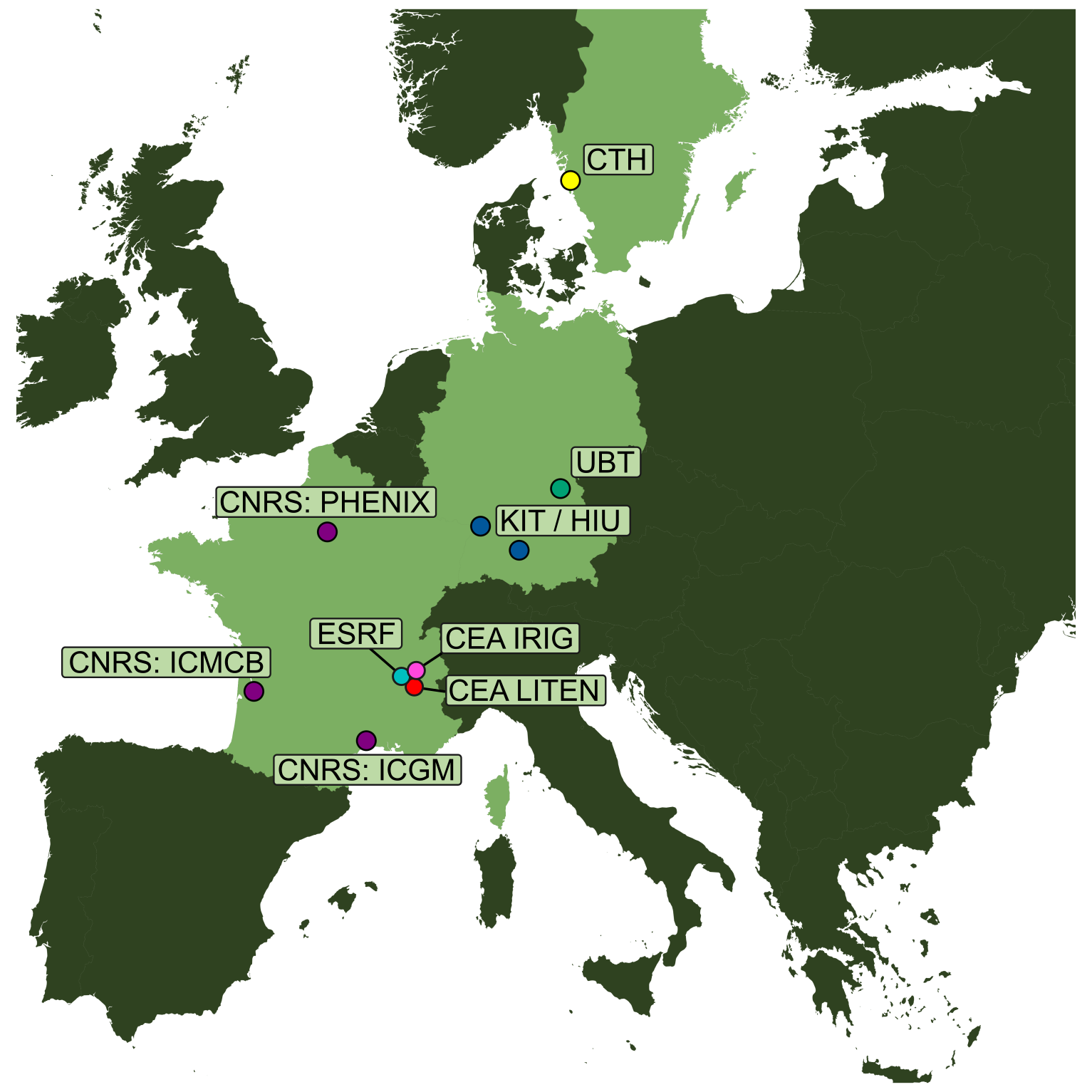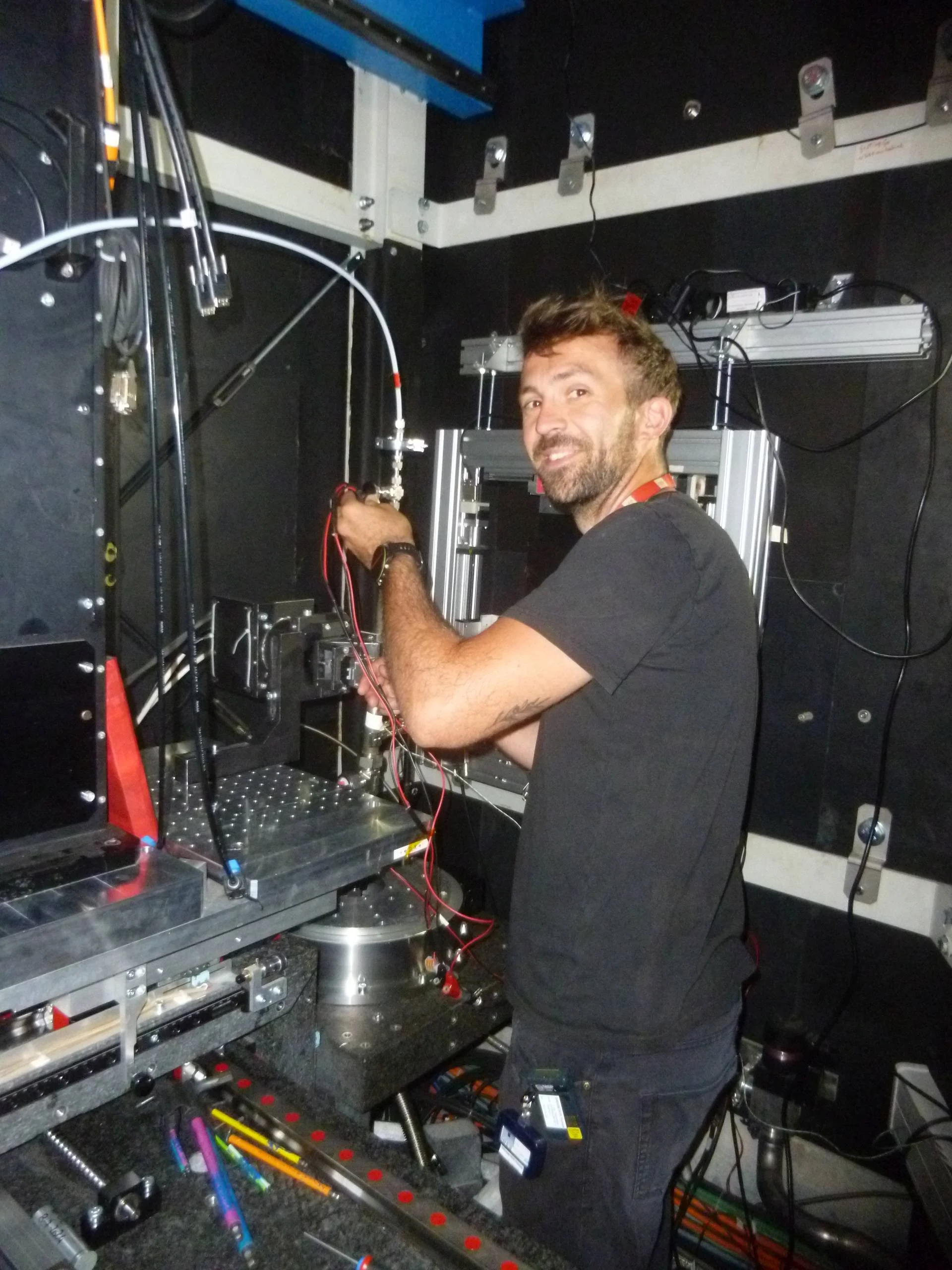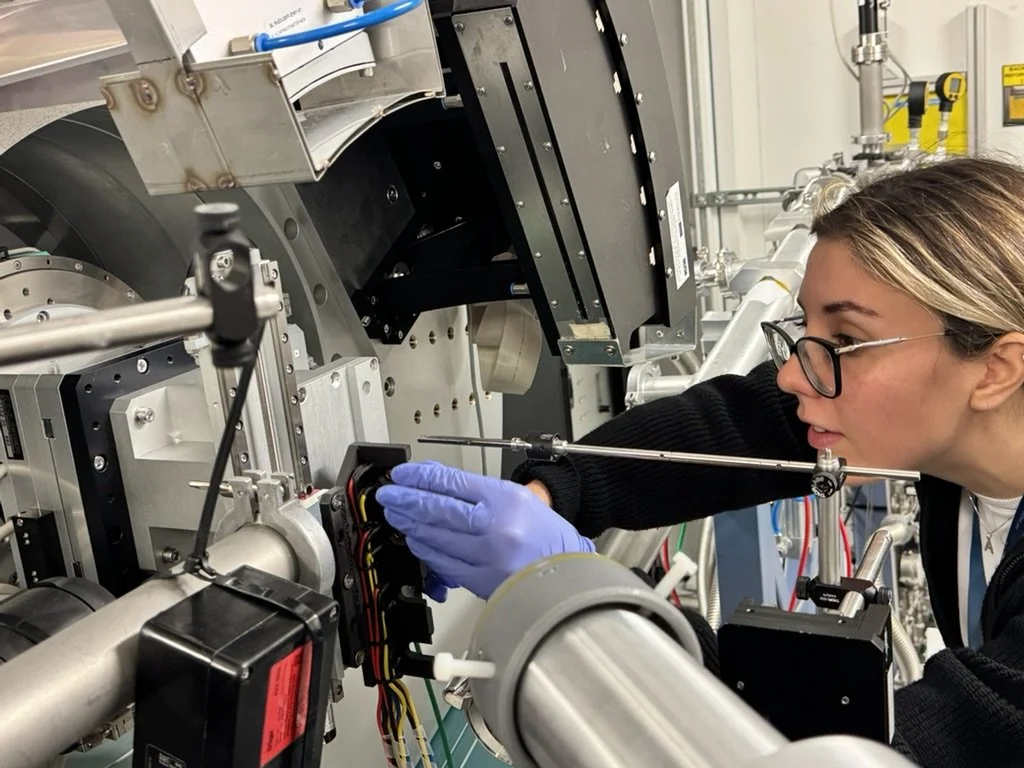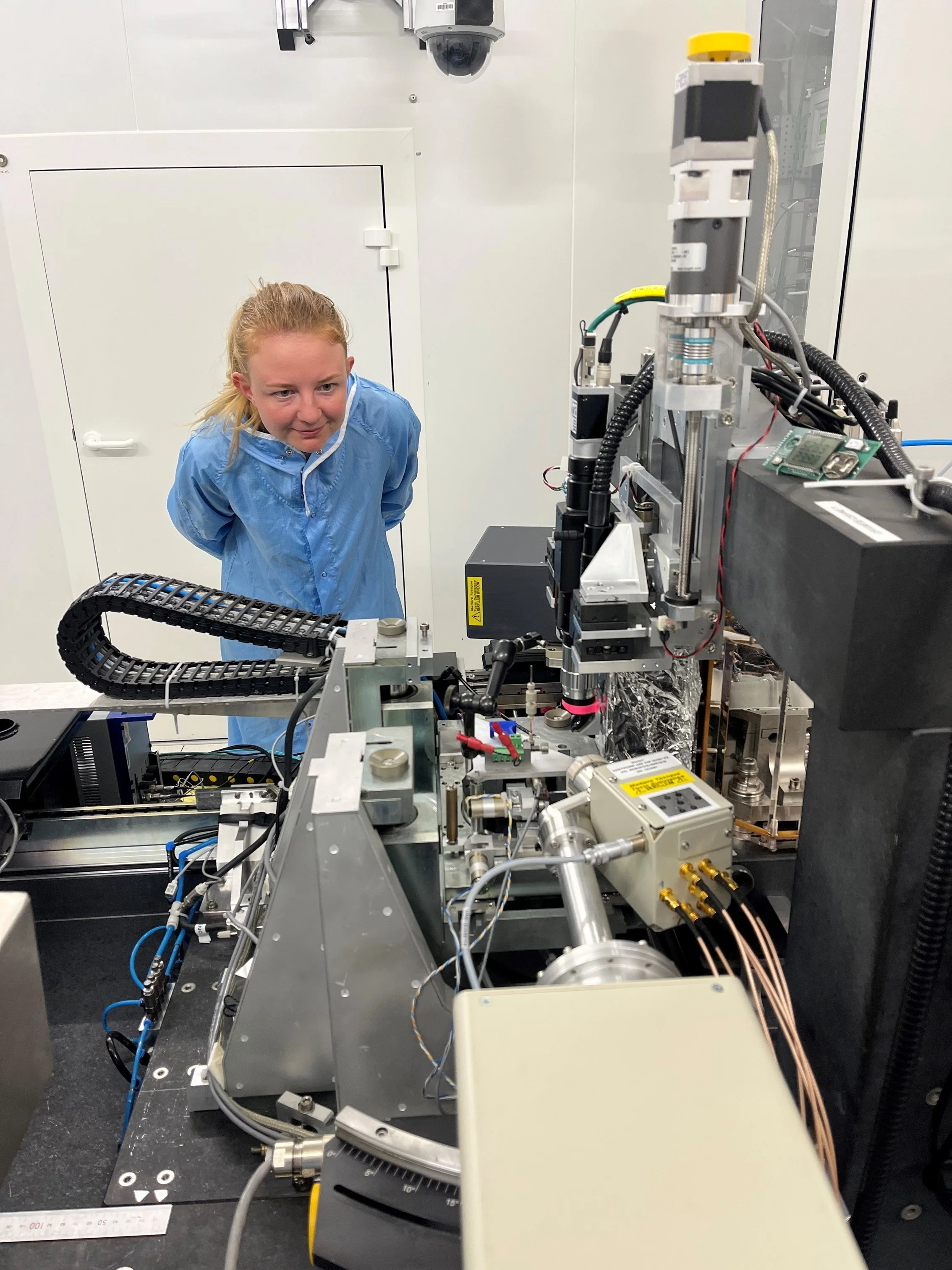Who
is involved?
The consortium is composed of battery experts from France, Germany and Sweden with complementary skills in materials synthesis, component engineering, battery prototyping, electrochemistry, analytical and numerical methods, as well as specialists of various synchrotron methods and/or multimodal approaches applied to complex materials.
Partners & Main PIs
CEA-IRIG, Grenoble, France – Dr. Sandrine Lyonnard
IRIG (Institut de Recherche Interdisciplinaire de Grenoble) is the fundamental research institute of the CEA (French Alternative Energies and Atomic Energy Commission) in Grenoble, France. CEA is a major French National Lab focused on the development of low-carbon energies. The IRIG PIs/Co-PIs were actively involved in the Battery Pilot Hub, with Dr. Sandrine Lyonnard acting as the coordinator of the Pilot and the present European Battery Hub. The group focuses on the development of multimodal characterization of energy storage and conversion systems, with expertise in several neutron and synchrotron techniques, particularly in operando mode, to investigate reaction and ageing heterogeneities in different types of insertion and intercalation materials for Li and Na ion batteries, from particle scale to cell level.
CEA-LITEN, Grenoble, France – Lise Daniel
LITEN, represented in the Battery Pilot Hub and the European Battery Hub by Lise Daniel, is the research and technology institute of CEA in Grenoble dedicated to the energy transition. Its activities focus on several key areas: solar energy, smart grid management, batteries storage and hydrogen with the view to improving energy efficiency and circular economy approach. Research teams dedicated to batteries: 200+ staff, 30+ industrial partners, 350+ patents, covering the full value chain from battery materials to cells, modules, packs, BMS, and recycling, including multi-scale modelling and characterization.
ESRF, Grenoble, France – Dr. Jakub Drnec
The European Synchrotron Radiation Facility (ESRF), located in Grenoble France, is a world-leading research center that produces ultra-bright X-rays for cutting-edge scientific exploration across disciplines. Within the European Battery Hub, the ESRF provides access to six complementary beamlines allowing to get a holistic understanding of the structural, morphological and chemical properties on the particle, component, and cell level of battery systems. The ESRF scientists, represented by Dr. Jakub Drnec within the Hub, work together with the different actors in the Hub to develop and push the boundaries of synchrotron characterization tools available for the battery community.
CNRS-ICGM/RS2E, Montpellier,France – Prof. Lorenzo Stievano
CNRS includes several institutes in France (Institut Charles Gerhardt Montpellier, Institut de Chimie de la Matière Condensée de Bordeaux and Physicochimie des Électrolytes et Nanosystème Interfaciaux Paris), already collaborating within the framework of the French Network on Electrochemical Energy Storage (RS2E). The latter is a research network aimed at discovering and transferring to the industry new battery and supercapacitor technologies. The different CNRS groups, represented in the European Battery Hub by Prof. Lorenzo Stievano, are strongly involved in the development of X-ray diffraction and spectroscopic methods for the study of batteries and supercapacitors.
KIT-HIU, Ulm, Germany – Prof. Dominic Bresser
The group of Prof. Dominic Bresser is working at the Helmholtz Institute Ulm (HIU) that has been co-founded in 2011 by Karlsruhe Institute of Technology (KIT), Ulm University, the German Aerospace Center (DLR) and the Center for Solar Energy and Hydrogen Research (ZSW) as the German center of excellence in the field of electrochemical energy storage. The group is focusing on lithium and sodium batteries, including inorganic and organic electrode materials, metal electrodes and “zero-excess” electrode concepts, liquid, solid and hybrid electrolyte systems, improvements of the electrode processing including novel binder systems and electrode components. The overarching idea is to develop novel and optimized materials and battery cells based on an in-depth understanding of the underlying principles and mechanisms.
University of Bayreuth, Germany – Prof. Matteo Bianchini
The group of Prof. Matteo Bianchini at the University of Bayreuth (UBT) is part of the Bavarian Center for Battery Technology (BayBatt). BayBatt brings together battery-specific expertise in physics and chemistry, material science and engineering, as well as information technology and economics as a supra-regional competence center located in Bayreuth. The Bianchini group focuses in particular on the atomic scale properties of electrode materials for Li-ion batteries and next-generation NIBs and ASSBs. It tackles the design of new materials, their synthesis and structural and electrochemical characterization. Known inorganic electrode materials are also investigated to improve their synthesis and properties. In situ and operando characterization techniques, often at large-scale research facilities, are heavily employed for this purpose.
Chalmers University of Technology, Sweden – Prof. Aleksandar Matic
Chalmers University of Technology (CTH) performs leading research in the areas of life sciences, materials science, information technology, micro-and nanotechnology, environmental sciences and energy. The Division of Materials Physics at the Department of Physics has since >25 years been heavily involved in research on electrolytes for both lithium batteries (liquids, gels, polymers, ionic liquids) and since >10 years also for next-generation batteries. The group of Prof. Aleksandar Matic interests range from fundamental aspects of soft matter to applications of advanced and nanostructured materials in battery technology, with expertise in characterization of structure and interactions of materials using e.g. operando Raman spectroscopy of next generation batteries, neutron and X-ray scattering of electrolyte and electrode materials.









